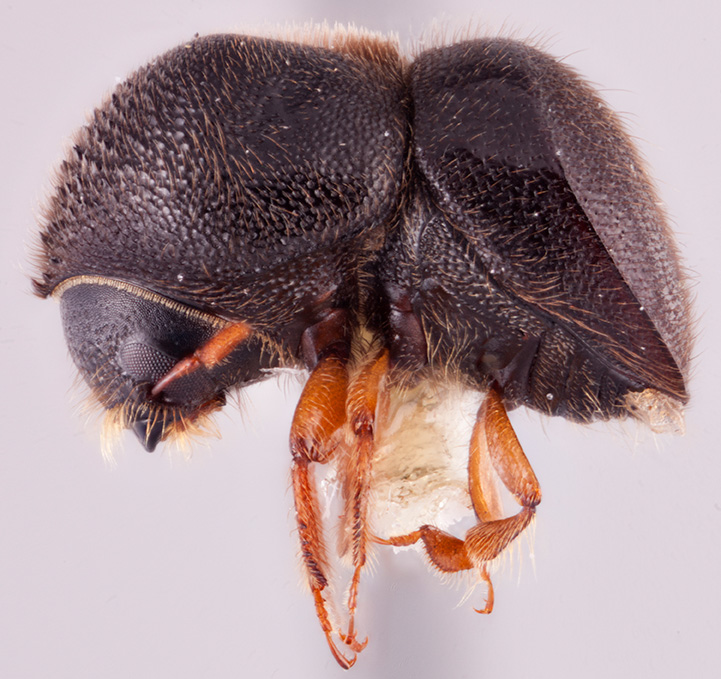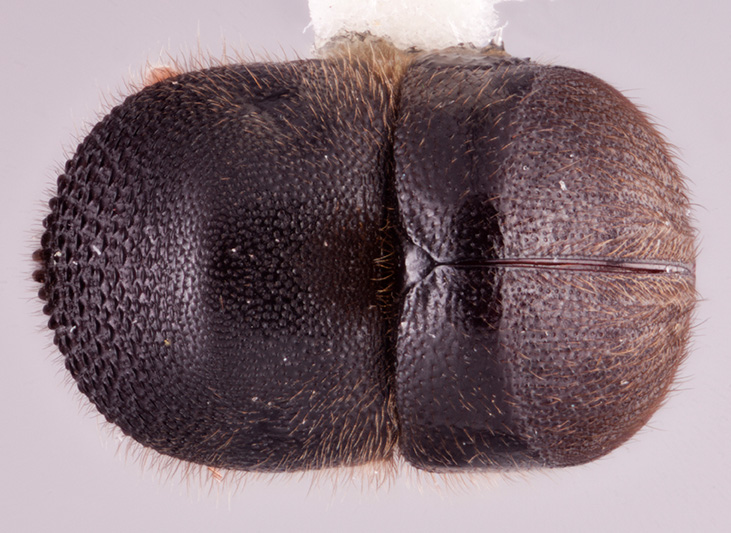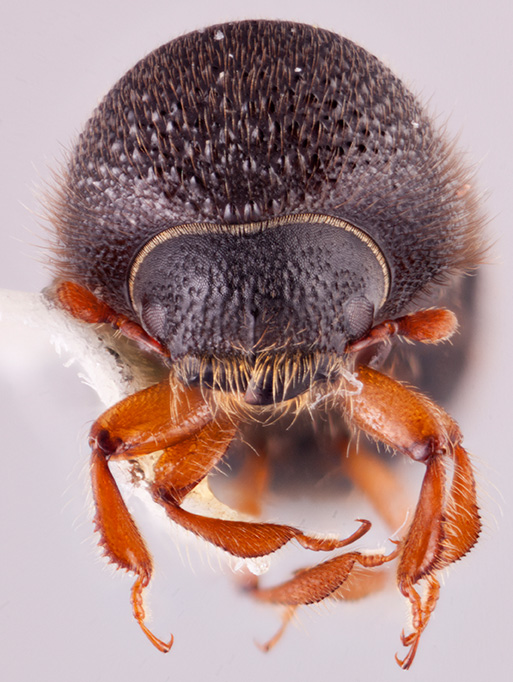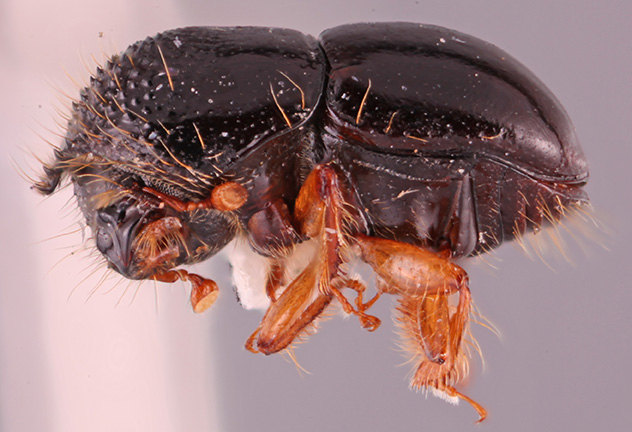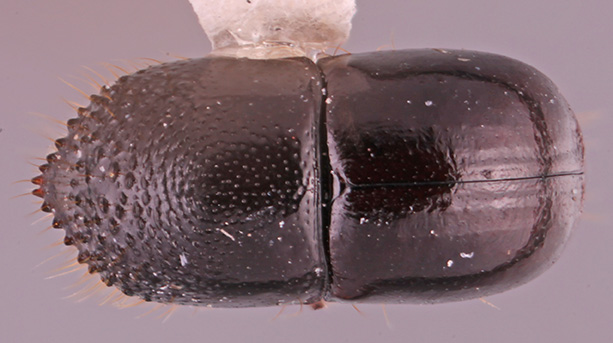Cnestus
|
Cnestus mutilatus; R.K. Osborn |
|
Cnestus mutilatus; R.K. Osborn |
|
Cnestus mutilatus; R.K. Osborn |
|
Cnestus mutilatus; R.K. Osborn |
|
Cnestus nitidipennis; S.M. Smith |
|
Cnestus nitidipennis; S.M. Smith |
Taxonomy
Cnestus Sampson, 1911: 383.
Synonyms
Tosaxyleborus Murayama, 1950: 49. Browne, 1955: 368.
Diagnosis
Cnestus are typically moderate to large in size 1.8−5.5 mm long, and stout 1.54−2.75 times as long as wide. Cnestus is a morphologically variable genus but can be distinguished by the eye feebly emarginateemarginate:
notched at the margin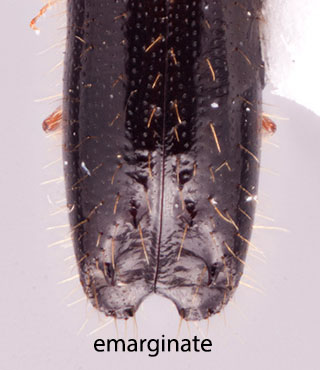 ; laterallateral:
; laterallateral:
pertaining to the side
 margin of the pronotumpronotum:
margin of the pronotumpronotum:
the dorsal surface of the thorax
carinate from basebase:
point or edge closest to the body; opposite of apex to at least the midpoint; submentum depressed; procoxae narrowly separated; antennalantennal:
to at least the midpoint; submentum depressed; procoxae narrowly separated; antennalantennal:
pertaining to the antennae
club obliquely truncateobliquely truncate:
nearly truncate but rounded not flat in lateral view
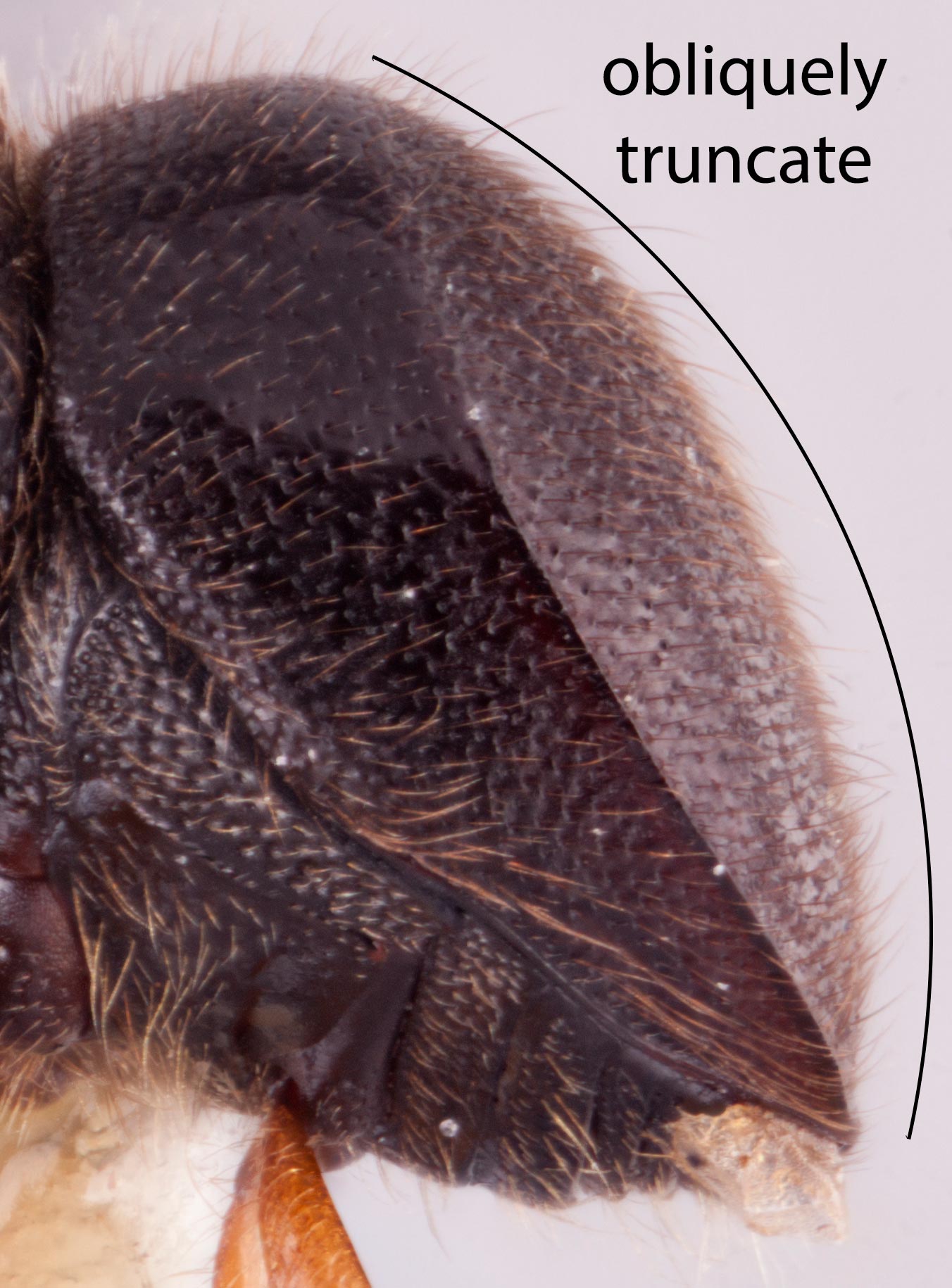 , types 1 or 2 with segment 1 completely or almost covering the posteriorposterior:
, types 1 or 2 with segment 1 completely or almost covering the posteriorposterior:
toward the rear end; opposite of anterior
 face; antennalantennal:
face; antennalantennal:
pertaining to the antennae
funicle 3 or 4 segmented; scutellumscutellum:
a shield-like sclerotized plate located at the midpoint of the elytral base
flat, flush with elytralelytral:
pertaining to the elytra
surface. Most species have a mesonotal mycangium on the pronotalpronotal:
pertaining to the pronotum
basebase:
point or edge closest to the body; opposite of apex .
.
May be confused with
Anisandrus, Hadrodemius, and Xylosandrus. Cnestus is closely related to Anisandrus, Hadrodemius and Xylosandrus, all of which possess a mesonotal mycangium and the associated dense tuft of hairs at the scutellar area and pronotalpronotal:
pertaining to the pronotum
basebase:
point or edge closest to the body; opposite of apex (Gohli et al. 2017Gohli et al. 2017:
(Gohli et al. 2017Gohli et al. 2017:
Gohli J, Kirkendall LR, Smith SM, Cognato AI, Hulcr J, Jordal BH. 2017. Biological factors contributing to bark and ambrosia beetle species diversification. Evolution 71: 1258-1272. https://doi.org/10.1111/evo.13219, Johnson et al. 2018Johnson et al. 2018:
Johnson AJ, McKenna DD, Jordal BH, Cognato AI, Smith SM, Lemmon AR, Moriarty Lemmon EL, Hulcr J. 2018. Phylogenomics clarifies repeated evolutionary origins of inbreeding and fungus farming in bark beetles (Curculionidae, Scolytinae). Molecular Phylogenetics and Evolution 127: 229-238. https://doi.org/10.1016/j.ympev.2018.05.028).
Distribution
Distributed throughout Asia and Oceania. One species is established in the United States (Schiefer and Bright 2004Schiefer and Bright 2004:
Schiefer TL, Bright DE. 2004. Xylosandrus mutilatus (Blandford), an exotic ambrosia beetle (Coleoptera: Curculionidae: Scolytinae: Xyleborini) new to North America. The Coleopterists Bulletin 58: 431-438. https://doi.org/10.1649/760).
Gallery system
The species, as far as is known, are twig and shoot-borers, and the gallery system is typical of such species with a short radial or circumferential gallery running to the middle of the stem, and longitudinal branches up and down the stem in which the brood develop.

